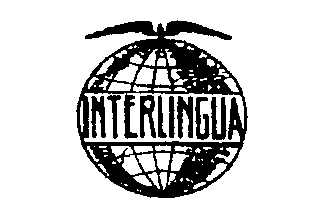
Last modified: 2007-04-14 by antónio martins
Keywords: globe | novial | bolak | vikto | flower (orange) | sun: 8 rays | star: 8 points (multi-colored) | occidental | interlingue | yin yang | interlingua | latino sine flexione | map: world | eagle | quenya | europanto |
Links: FOTW homepage |
search |
disclaimer and copyright |
write us |
mirrors
There are nowadays maybe six or seven “living
artificial languages” — from a total of several
hundered “dead” ones, with new ones popping every
year. The other “living” ones (meaning that a
speaker community, however small, do exists), as
far as I know, are
Interlingua (IALA),
Klingon,
Lojban,
Quenya,
Ido,
Volapük (sort of),
and, of course, Esperanto.
António Martins, 04 June 1999

Leon Bollack published his language project in 1899,
and insisted with some more learning and reading material
for some two years, with limited success. The name
"Bolak" meant "blue [language]", and it used this
color as symbol, standing for the sky surrounding the earth.
I don’t know of any specific logo.
António Martins, 04 June, 1999

Originally called Interlingua, this 1903 project by
G. Peano is currently known by it’s alternate name,
latino sine flaxione, due to another, later and
more successful language of the
same name. According to
Rodríguez, it had a very
classical symbol (in tune with the classical, as in
latin, origin of the language project): an eagle (roman?)
over the Earth globe, here in a conjectural black on
white 2:3 logo flag.
António Martins, 05 Jun 1999

Novial, an acronym of Nova International Auxiliari
Lingue was created in 1928 by Otto Jespersen, formerly
esperantist and
idist.
António Martins, 04 Jun 1999
As newly informed by Rodríguez (pers. comm.), the emblem of Novial
is something like two superimposed quadrangles with inward curve edges
of a light reddish hue, one of them symmetrical and standing on a side
and the other, standing on a point, with the upper point clearly
extended; the overlapping area is golden yellow.
This emblem was usually set on a white background.
António Martins, 24 May 2003
The article [rod97]
reports a seven pointed star on a «dark» background.
The author of this source, Rodríguez, informed me
later that this vague description was wrong.
António Martins, 04 Jun 1999 and 24 May 2003

Occidental was proposed by De Whal in 1922, renamed
to Interlingue in 1945 for political correctness; in
the early 80’ies all adepts had "upgraded" themselves
to the very similar Interlingua.
According to Rodríguez,
they used as a symbol a “ying-yang”
like device, standing for a world inter-relating and
united.
António Martins, 05 Jun 1999
Rodríguez (pers. comm.) informs also that the usual colors
used for the emblem of Occidental are red on white.
António Martins, 24 May 2003

Rodríguez refers that
this language was created by Bosz Vilmos, a Hungarian, but
doesn’t give the date. It’s logo is an orange five petal
flower contour with a large white V on it; under it the
motto «Vivat vikto!» (meaning more or less «Long
live vikto!»), composed with an ornamental face.
António Martins, 04 Jun 1999
Other currently active artificial language movements are not many, none of them with symbols (let alone flags) known to us:
Anything below this line was not added by the editor of this page.